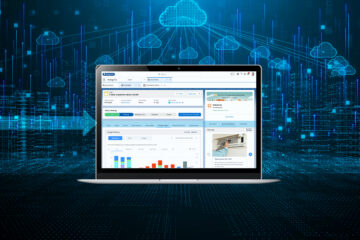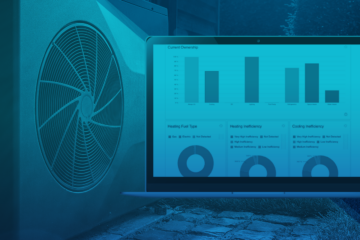Putting the Utility at the Center of the Consumers’ Shopping Experience
Ecommerce is having an unprecedented year in 2020. Through the first nine months of the year, U.S. consumers spent nearly $550 billion with online retailers, representing ~33 percent year-over-year growth before the fourth quarter had even begun. Ecommerce has been growing steadily for the last decade, and the pandemic accelerated the trend. Experts anticipate that post-COVID the accelerated growth will continue and as consumers move their shopping and purchases online. There’s a growing opportunity for energy utilities to partake in this boom.
At the same time, a new administration is outlining its plans and priorities for the next four years, including a promise of a renewed focus and likely investment in advancing decarbonization and clean energy programs. Utility ecommerce efforts have the potential to benefit from the administration’s initiatives in this area as next gen utility marketplaces are well suited to promote energy efficiency and support beneficial electrification, including advancing new technologies like EV, solar and smart home connected devices.
However great the opportunity for energy utilities to evolve their business model, the success of marketplace programs is not assured. In fact many existing utility marketplaces programs have yet to break-even. Anecdotally, we continue to see more resources being expended on marketplace programs than the revenues they generate.
According to Dave Reim, CEO & President of energy industry content firm Questline, this unrealized opportunity is due in large part to the fact that many legacy marketplaces were developed with an “if we build it, they will come” philosophy.
“As a person operating in the utility communication and customer engagement space for almost 30 years, I don’t believe in “just build it” adage,” explains Reim. “I have seen the best intended, best researched and best planned ecommerce initiatives fail because of one critical factor: an inability of most utilities to digitally engage with the customer in ways in which the customer expects and wants to be engaged. Success from marketplace programs is a function of having first established a solid digital engagement and customer satisfaction foundation that ultimately supports an evolution into an advisory relationship where customers turn to their utility to provide information, resources and insights to help guide their online buying decisions.”
Bidgely and Questline have brought together Bidgely’s UtilityAI™-powered Smart Shop™ marketplace platform and Questline’s high caliber energy content marketing to help utilities master the digital engagement to preferred ecommerce destination transition. The progression involves five essential steps:
1) Proactively identify customer challenges and provide meaningful solutions.
First, define your audience by understanding exactly who you’re talking to and what questions or challenges they have.
“Utilities possess tremendous data on customers, but as a general rule, have not leveraged it to realize its full customer engagement potential,” says Bidgely VP of Business Development, Ed Lieberman. “Data about customer energy usage habits, billing history, appliance ownership, content interactions and more reveals precise customer pain points and opportunities to solve them. Data about customer motivations and interests further fine tunes actionable insights. Are they more interested in saving money or reducing their carbon footprint? Do they like playing around with high-tech gadgets or would they rather have a simple product that’s easy to use? Meeting customers where they are with an understanding of their top-of-mind concerns builds trust, deepens relationships and enables utilities to better move customers through the buying process down the road.”
2) Leverage greater personalization to realize deeper engagement and more conversions.
A marketplace can’t be impersonal or one-size-fits-all. Instead, the customer insights identified in step one should enable a hyper-personalized ecommerce experience and overall customer journey for every individual. Leveraging an understanding of what is going on in a given energy user’s home, utilities are empowered to make targeted, highly relevant product recommendations. For example, when data reveals an inefficient appliance in a home, that customer is ideally suited to receive an on-point, well-timed product suggestion for a more efficient appliance.
3) Expand your role from energy provider to trusted advisor by providing customers with the education they’re seeking to better understand their options.
Customers frequently want to conduct their own research when they’re making a purchase decision, and utilities are in a unique position to serve as a reliable industry expert. That’s why Bidgely recommends leading with education to help the customer become more knowledgeable, and ultimately more confident, as they consider recommended products or services.
Instead of using traditional advertising to promote LED bulb or appliance sales, for example, it is more effective to provide the useful information that customers are seeking and guide the purchase decision. Customer action is more effectively based on trust and familiarity rather than a one-time sales message.
Educational content should be both easy to find and integrated within the marketplace as well as proactively shared with customers directly via email and text. Again, the goal is to meet them where they are.
4) Provide relevant content to help customers make purchase decisions and boost program participation.
Continuing to build engagement requires a content marketing strategy that positions the utility as a helpful resource in customers’ lives. Consider each customer’s buying journey and the questions that he or she will have along the way. Different people learn in different ways and have different needs based on where they are in their journey. Did the customer just start learning about smart thermostats? Those at the beginning of their journey may have some very basic questions about how smart thermostats work. Or perhaps cost concerns are preventing a customer from making a purchase. In that case, content that explains the long-term savings potential is key — especially if those savings are personalized to the customer’s unique energy usage. Or maybe the customer is concerned that smart thermostats are too complicated or difficult to use, which would make a video that demonstrates how to install and set up a smart thermostat the right fit.
When it comes to content best practices, Brian Lindamood, AVP, Creative & Content Strategy at Questline says there are three things to keep in mind.
“The first is to think about the quality and professionalism of the content. This is not where you want to cut corners,” Lindamood emphasizes. “You know the advice you give reflects your brand and the expertise that your customers expect from you, so you want to make sure that you make an appropriate investment in content quality. Good content is also more engaging. If it’s informative, if it’s entertaining, customers are going to spend more time with it and they’ll be more likely to share it with others which will increase your reach.
“You want to make sure you make a distinction between your content marketing and other marketing and advertising messages. Your content marketing shouldn’t come across as sales-y if you want it to get through. If your content is useful and it helps customers make decisions, then they will seek it out, and you won’t have to worry about pushing it as you would with an ad.
“And finally, while text articles have their place, and they certainly are an efficient way to communicate a lot of details, we find that customers increasingly prefer videos and multimedia content. Few would argue that this is the way of the world now. People would rather watch a video to get certain kinds of information, and video content is also more memorable, relatable and shareable. It is absolutely worth that investment.”
5) Fund your customer-centric marketplace using a “win-win-win” personalized outreach and affiliate marketing strategy.
Current utility marketplace business models face an uphill climb to profitability because they include high subscription fees plus additional fees for digital advertising to drive traffic — significantly reducing revenue generation potential.
By eliminating incremental subscription fees and replacing paid online advertising with highly targeted one-to-one customer communications, Bidgely’s Smart Shop solution delivers better results at a lower cost. Plus, through affiliate marketing partnerships with mainstream ecommerce sites like Amazon, Walmart, Home Depot and Lowes, external vendors provide Smart Shop funding and drive sales via their own advertising efforts. This self-funding approach both revolutionizes and de-risks marketplace investments.
Bidgely and Questline have combined the best of breed AI technology and content marketing to create a new, more successful utility marketplace platform model. It is a smarter marketplace experience that will enable utilities to seize the unique opportunities presented by the simultaneous acceleration of ecommerce adoption and federal focus on advancing energy efficiency, decarbonization and beneficial electrification. To learn more, view the on-demand webinar, featuring key insights from Bidgely and Questline here.


